Who Was Elizabeth ‘Lee’ Miller? The True Story Behind the Kate Winslet-Led Movie
Of the correspondents to cover the Second World War, one of the most famous was Lee Miller. Working for Vogue and traveling with the US Army, Miller captured several harrowing and history-defining moments, including the Blitz and the Allied liberation of concentration camps.
Miller’s photography brought the horrors occurring in Europe to the British and American public, and her efforts were recently memorialized in the Kate Winslet-led film, Lee (2024).
Lee Miller’s early life and foray into modelling
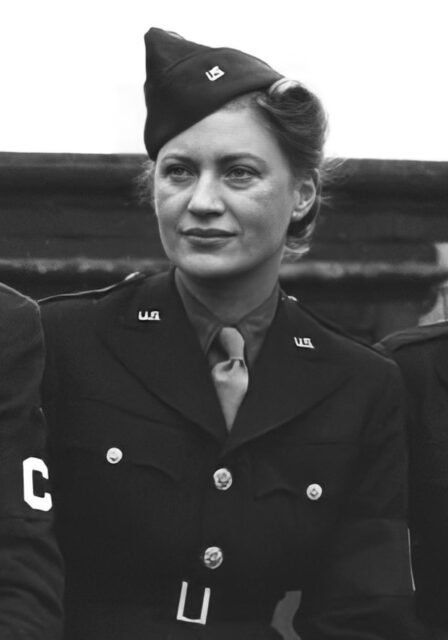
Elizabeth “Lee” Miller was born on April 23, 1907, in Poughkeepsie, New York. Raised in a family that appreciated the arts, her father, Theodore Miller, was an amateur photographer, and he was the to introduce her to the world of photography. His work was exploitative, however, often featuring a young Miller in the nude.
Miller’s childhood was further marred by trauma when she was assaulted at the age of seven while staying with family friends. The event, which led to her contracting a venereal disease, left deep emotional scars and impacted her throughout her life.
Despite these early hardships, Miller’s striking beauty and determination set her on a path to success. She spent months in Paris, France, learning about the theater industry, and in her late teens moved to New York City, where a chance encounter with Condé Nast, the publisher of Vogue, marked the beginning of her brief stint in the fashion industry. She became one of the most sought-after models of her time, gracing the covers of magazines and becoming a muse for renowned photographers.
Opting for a career behind the camera lens
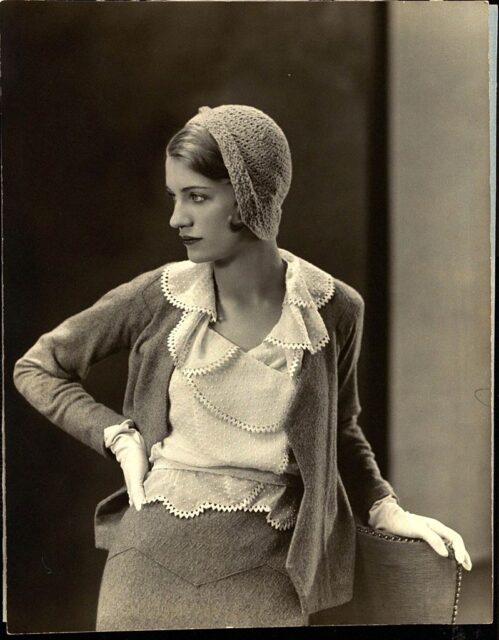
Lee Miller went from in front of the camera to behind it in 1929, when she returned to Paris. She sought out surrealist artist and photographer Man Ray, who initially refused to take on students. Undeterred, Miller declared herself his apprentice, and they soon became not only collaborators, but also lovers. Under Ray’s tutelage, she honed her photography skills and helped aid in the development of the solarization technique, which became a hallmark of their work.
Miller’s early work in Paris was a blend of fashion and fine art photography, with hints of surrealist influences. Her photos from this time in her life are notable for their innovative use of light and shadow, along with their dreamlike quality; Miller’s ability to blend everyday scenes with an otherworldly aura set her apart from the rest, and she was soon rubbing shoulders with the era’s biggest names, including Pablo Picasso and Salvador Dalí.
By 1934, Miller and Ray’s romantic relationship had run its course. She married businessman Aziz Eloui Bey and moved to Cairo, Egypt, where she was happy – for a time. Before long, she grew restless. This, paired with an unhappy marriage, led her to make a much-needed change.
Lee Miller’s covering of World War II
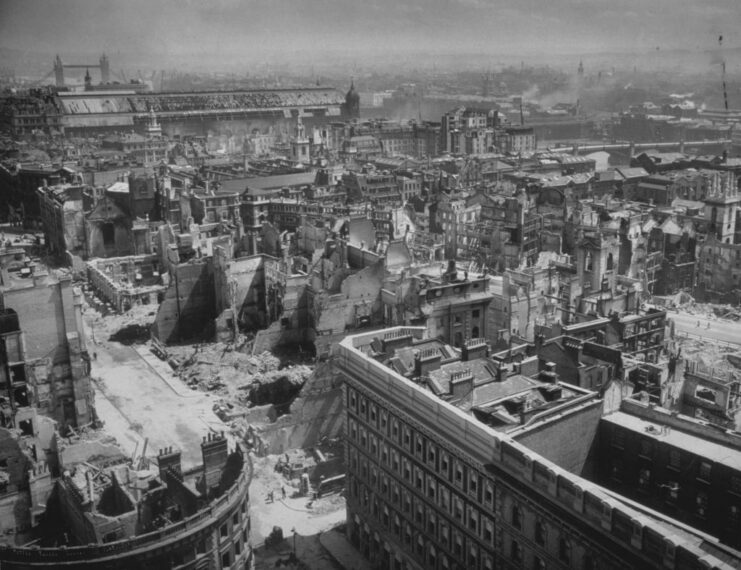
Upon the outbreak of World War II, Lee Miller’s life took yet another dramatic turn. Now living in London, England, with her partner, British surrealist painter Roland Penrose, she felt compelled to document the conflict “as historical evidence.”
Miller became an accredited war correspondent for Vogue, with the publication looking for female photographers to replace the men who had gone off to fight, and she went on to capture some of the most harrowing scenes of the war. She covered the Blitz, the liberation of Paris and, famously, Buchenwald and Dachau concentration camps, thanks to her connections in the US Army.
Miller’s work during the conflict was groundbreaking not only for its content, but also for the perspective she brought as a woman in a predominantly male field. Her photos of the conflict’s devastation and the resilience of those affected were raw, powerful and unflinching, providing a stark contrast to the sanitized images often presented to the public.
One of her most iconic images is of herself in the Führer‘s bathtub, taken on the day of his death. By then, his Munich, Germany, apartment had been turned into an Army command post, and as she looked through his personal possessions, she was struck by how “ordinary” they seemed.
Liberation of Buchenwald and Dachau
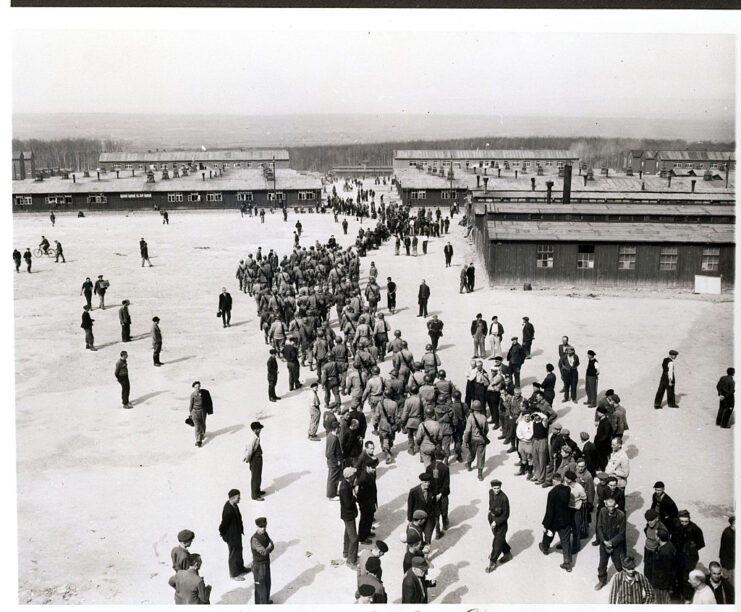
Lee Miller hadn’t planned to cover the post-liberation days at Buchenwald, but, upon hearing about it through her Army contacts, hitched a ride to the camp. She could have never prepared herself for what she witnessed upon her arrival, but it was better than it had been when it was liberated several days prior.
Miller spoke little about her time at Buchenwald, but did make her disgust toward the locals well-known.
On April 30, 1945, Miller and fellow war correspondent David E. Scherman arrived at Dachau. It was just one day since the 42nd and 45th Infantry Divisions had liberated the concentration camp, and the scene was much worse than at Buchenwald. Capturing photos of SS guards, both dead and alive, and standing around the skeletal remains of those held prisoner at the site, Miller knew she needed to document what had occurred.
There was a fear among the US Army that those back home wouldn’t understand the true brutality of what had taken place at the German-run camps, and Miller was determined to make them see the horrors. The resulting article didn’t hold back, showing the site’s conditions alongside phrases like, “Believe it,” and “GERMANS ARE LIKE THIS.”
Lee Miller’s post-war life and death
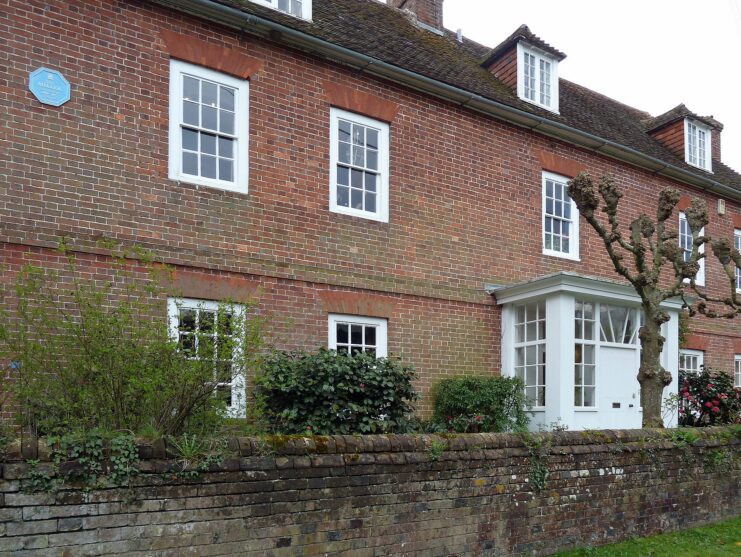
After World War II, Lee Miller struggled with the psychological aftermath of the horrors she’d witnessed. She suffered from what we now recognize as post-traumatic stress disorder (PTSD), which, compounded by her struggles with alcoholism and depression, made her post-war years challenging. The memories of the conflict continued to haunt her, and she never fully recovered from the trauma.
Despite these difficulties, she continued to work, albeit sporadically, for Vogue and other publications, often focusing on fashion and portrait photography. In 1947, Miller married Roland Penrose, and they settled at Farley Farm House in East Sussex, which became a hub for artists and intellectuals. She also became a gourmet cook, hosting elaborate dinner parties for their guests.
Lee Miller passed away from lung cancer on July 21, 1977, at the age of 70.
Lee (2024)
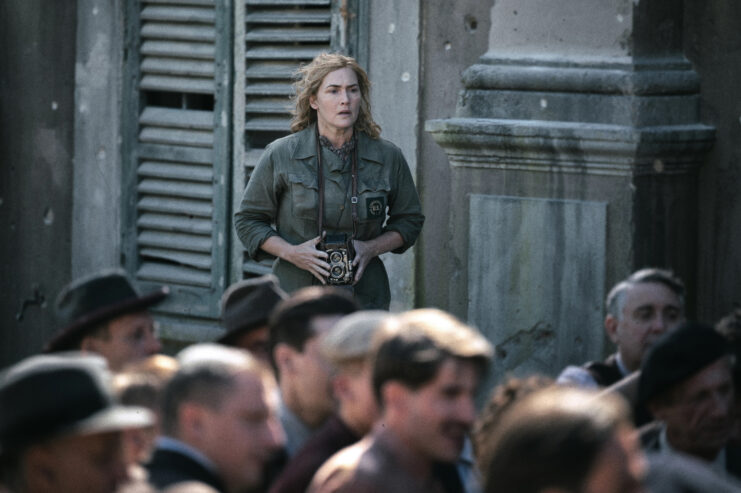
Lee Miller’s legacy as a pioneering photographer and war correspondent has only grown in the years since her death, thanks in large part to the efforts of her son, Antony Penrose. He discovered a treasure trove of her work in the attic of their family home and has dedicated himself to preserving and promoting her contributions to photography and art.
Today, Miller’s work is celebrated in exhibitions and publications worldwide. Her legacy was also memorialized by the biography, The Lives of Lee Miller, which was published by her son in 1985.
More from us: The Controversial Film ‘Defiance’ Brought the Resistance Work of the Bielski Partisans to the Big Screen
Want War History Online‘s content sent directly to your inbox? Sign up for our newsletter here!
The 2024 film Lee, starring Kate Winslet, brings Miller’s extraordinary life to a new audience. Directed by Ellen Kuras, the biopic focuses on Miller’s experiences during World War II, capturing her bravery and the impact of her work. Winslet’s portrayal of Miller has been lauded for its depth and authenticity, shedding light on the complexities of a woman who defied the conventions of her time to document the brutal realities of war.
The post Who Was Elizabeth ‘Lee’ Miller? The True Story Behind the Kate Winslet-Led Movie appeared first on warhistoryonline.
Who Was Elizabeth ‘Lee’ Miller? The True Story Behind the Kate Winslet-Led Movie
Philippines Truth
Post a Comment
0 Comments